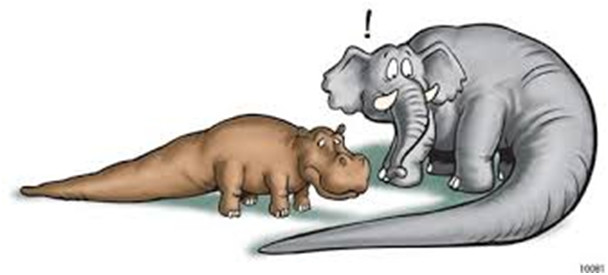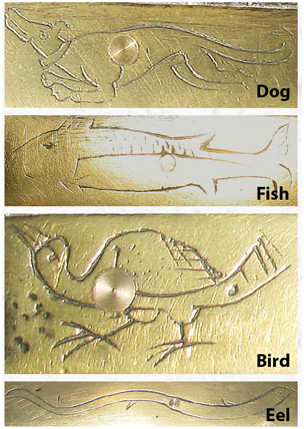The provenance of the Ica stones has been more than questioned. They were admitted to be fakes by the person who “discovered” them. Not only that, but he appeared on a BBC documentary in which he showed how he faked them with a dentist’s drill and how he gave them their “aged” appearance by baking them in cow dung.
In any case, far from predicting discoveries about dinosaurs such as circles on their skin, they depict dinosaurs in ways that were widely portrayed in the 1960s but that are now known to be inaccurate or even outright false. T-Rex is depicted standing upright and dragging its tail along the ground, while in reality it stood horizontally with its tail sticking straight out the back. Theropod dinosaurs are now known to have had feathers, which are not depicted on the stones. None of the dinosaurs depicted have ever been discovered fossilised in Peru, while megafauna that did inhabit the area, such as terror birds and carnotaurus, are notable by their absence. The stones also depict UFOs, modern surgical techniques, world maps, and horses and carriages – a form of transport that was unknown to the Inca and Nazca people before the arrival of Europeans.
Sorry @cewoldt, but you really are scraping the bottom of the barrel here. The claim that humans and dinosaurs coexisted is an extraordinary one and as such it requires extraordinary evidence. A tiny handful of drawings that are at best highly ambiguous and at worst blatant forgeries simply isn’t going to cut it.
Fun fact: my cousin is on the staff of Carlisle Cathedral. He assures me that the idea that sauropod dinosaurs roamed the Carlisle area in the 15th century is bonkers.
In any case, these engravings are so ambiguous that I can’t even tell which end is the head and which end is the tail.


